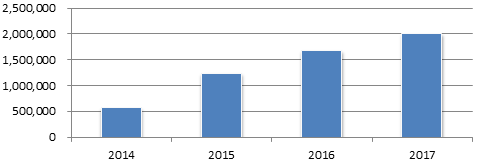In Indonesia, industrial development has resulted in wide-ranging types of waste from factories and similar facilities, causing environmental pollution and health damage to residents. In particular, hazardous and toxic wastes (B3 wastes) have caused the deterioration of the environmental quality across the country. One of the B3 wastes of particular concern is those containing heavy metals such as lead, mercury and arsenic. Heavy metals have persistent toxicity and pose a high risk to human health and living environment. For example, heavy metals’ major potential impacts on human health include decrease of IQ in infants, decreased ability to produce hemoglobin, impaired fertility in men and women, and causes of miscarriage and fetal death during pregnancy.
The problem of soil contamination caused by B3 wastes is also emerging in Indonesia. For example, in Cinangka village (Bogor, West Java Province), residents melt illegal wasted batteries every year without any consideration for health, safety or environmental impacts. Some of the debris of melted battery is landfilled or used as a material for cement works. The remaining is dumped at various places, causing soil contamination in the village. The lead level of the soil in the village reached 270,000 ppm while the permissible limit of the safety standard set by the World Health Organization (WHO) is 400 ppm. Some of residents who lived near the village had the blood lead level of 65 µg/dL, which exceeded the permissible limit defined in the WHO safety standards.
The below Figure shows the trend in the amount of soil with confirmed contamination in Indonesia. The amount of confirmed contaminated soil is increasing year by year, partly due to the strengthened control over pollution by the government. The amount of unconfirmed contaminated soil is estimated to be even greater.

Amount of contaminated soil in Indonesia[1] (unit: ton)
As shown in below, soil pollution control in Indonesia is performed pursuant to the Regulation of the Minister of Environment and Forestry No. 101/ 2018 on Guidelines for Rehabilitation of Soil Contaminated with Hazardous and Toxic Wastes (B3 Wastes), which is set under the Law on Environmental Protection and Management and the Government Regulation on Hazardous and Toxic Waste management.
- Law No. 32/2009 on Environmental Protection and Management
A fundamental environment law, which regulates the environmental management in Indonesia generally.
It also stipulates specific penalties.
- Government Regulation No. 101/2014 on Hazardous and Toxic Waste Management
- Regulation of the Minister of Environment and Forestry No. 101/ 2018 on Guidelines for Rehabilitation of Soil Contaminated with Hazardous and Toxic Wastes (B3 Wastes)
- Government Regulation No. 101/2014 on Hazardous and Toxic Waste Management
[1] The Ministry of Environment and Forestry of Indonesia
http://pemulihanlb3.info/web2/wp-content/plugins/download-attachments/includes/download.php?id=667
 Indonesia, Soil pollution control
Indonesia, Soil pollution control
























